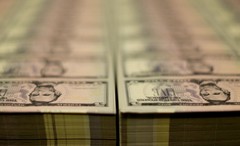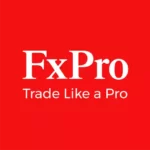Is it true that foreign exchange is returned? The truth is fully analyzed.
part1: The Truth About Forex Cash Back
The foreign exchange market is an area full of complexity and risk. When investors trade foreign exchange, they often focus on how to maximize returns while reducing potential risks. In this context, foreign exchange cashback, as a common investment strategy, has gradually attracted more and more investors' attention.
1. The concept and common forms of foreign exchange cash back.
Foreign exchange cash back, refers to the investor in the sale of foreign exchange, the bank or broker in accordance with a certain percentage of the return of a portion of the sale of the spread in return. This form of cash back is usually paid in cash or equivalent foreign exchange, depending on the bank's policies and market conditions.
For example, suppose an investor buys EUR/USD at the 1.10 exchange rate and then sells it at the 1.15 exchange rate, with a spread of zero, and the bank may return the spread at 0.5 percent. It is important to note that cashback is usually calculated based on the difference between the ask price and the bid price, not the difference between the bid price and the ask price.

2. Operational mechanisms for foreign exchange cashback
When banks or brokers trade foreign exchange, they usually operate in the following ways:
Customer orders: An investor submits an order to buy or sell to a bank.
The bank executes the transaction: the bank executes the corresponding transaction according to the market exchange rate and the customer's instruction.
Calculating the difference: The bank calculates the difference based on the bid and ask prices and returns part of the difference as cash back in accordance with the agreed proportion.
Payment of cash back: The bank pays the calculated cash back amount to the investor in cash or equivalent foreign exchange.
It is important to note that a bank's cash-back policy may vary depending on market volatility, trading volume and the bank's own strategy. Therefore, when choosing a bank, investors need to understand the bank's cash-back policy in detail and make judgments based on their own needs.
3. Common types of foreign exchange cashback
Fixed percentage return: The bank returns a fixed percentage of the spread, such as 0.5, 1 or 2 per cent.
Step-by-step cash return: the higher the price difference, the higher the cash return ratio, for example, 0.5 below 1%, 1%-2% to 1%, and more than 2% to 1.5.
Floating cash-back: Automatically adjust the cash-back ratio according to market fluctuations, for example, increase the cash-back ratio when the market rises.
4. Analysis of the advantages and disadvantages of foreign exchange cash back.
Advantages:
Increased earnings: Cash back provides investors with additional income, especially when the market is rising, investors can further lock in profits through cash back.
Reduce risk: Cash back can be seen as a risk management tool to help investors reduce losses when they lose money.
Disadvantages:
The calculation of the spread is complex: the calculation of cash back is based on the difference between the bid and ask prices, so investors need to have a clear understanding of exchange rate fluctuations.
Bank control risk: the bank's cash back policy may be affected by its own strategy and market environment, investors need to assess the bank's ability to cash back.
(Actual cases or data can be inserted here to enhance persuasion)
For example, a bank will return 0.5 per cent of the spread to investors as cash back for a certain period of time in 2023. Assuming an investor buys EUR/USD at 1.10 and sells at 1.15, the difference is 0.05, and the bank calculates it at 0.5 per cent, with a return of € 0.0025 per trade. Through this form of cash back, investors not only lock in the spread gains, but also get additional gains.
part2: Potential Risks and Truth of Forex Cash Back
Although foreign exchange cash back seems to provide investors with an additional way of income, but the hidden risks behind it can not be ignored. Investors need to fully understand the limitations and potential risks when using cash back.
1. The impact of market volatility on cash returns
The foreign exchange market is highly volatile and spreads can fluctuate significantly in a short period of time. If investors sell without the spread fully covering the bank's cash back, they may face greater losses. For example, suppose an investor buys EUR/USD at 1.10 and then the market falls to 1.05 at a spread of -01.05, and the bank calculates the cash back at 0.5 per cent, it may require the investor to sell at a lower price, thereby further extending the loss.
2. Repayment capacity of banks
The bank's ability to repay is an aspect that investors need to focus on when using cash back. While banks usually return the difference at an agreed rate, market volatility and the bank's own trading strategies may prevent banks from meeting their cash-back commitments on time or on a pro rata basis. For example, if a bank reduces the volume of transactions when the market is down, it may result in the spread not being calculated as planned, thus affecting the accuracy of the cash back.
3. Matching of investors' own capabilities
The foreign exchange market is highly demanding of investors' abilities, including the judgment of exchange rate movements and the development of trading strategies. Investors need to choose a suitable cash-back strategy based on their own capabilities and risk tolerance. For example, investors with high risk tolerance can accept greater volatility risk, while risk-averse investors may need to avoid using cashback.
4. The combination of foreign exchange cash back and investment strategy.
While cashback can provide investors with additional income, it is not a substitute for an effective investment strategy. Investors need to combine technical analysis, fundamental analysis and market trends to develop a comprehensive investment strategy. Cash back is only an auxiliary tool, not the only means of investment.
5. Investors need to evaluate carefully
When using cash back, investors need to carefully assess whether it meets their investment objectives and risk tolerance. If investors are unable to independently judge market movements or are unfamiliar with the bank's cash-back policy, it is recommended to avoid using cash-back.
Conclusion:
Forex cashback, as a common investment strategy, provides investors with additional returns, but also hides complex market risks and potential pitfalls. When using cashback, investors need to fully understand its operating mechanism, market risks and the bank's ability to repay. Only by fully assessing their own capabilities and the market environment can investors truly use the foreign exchange rebate as a tool to maximize investment returns.

























